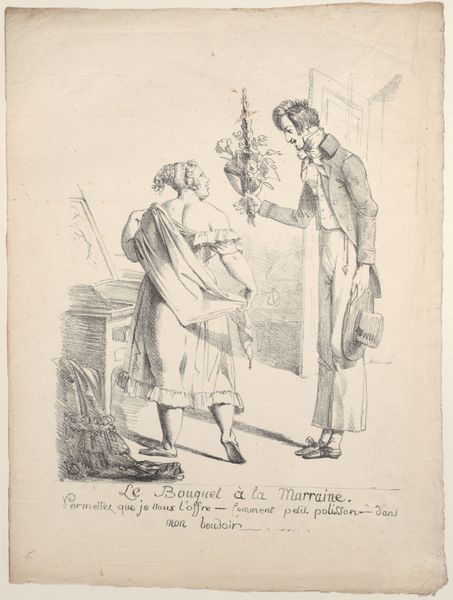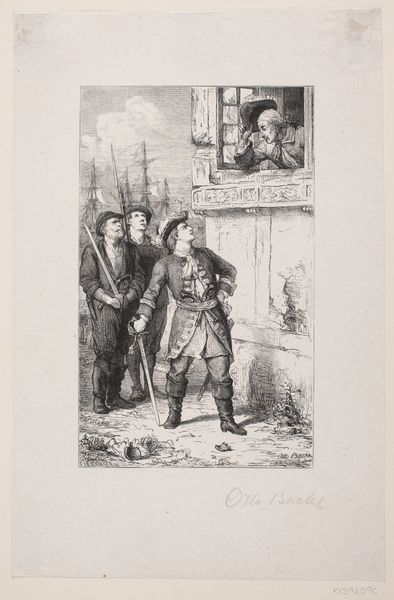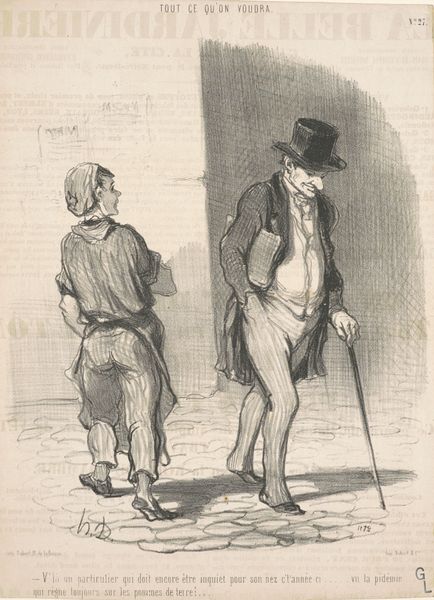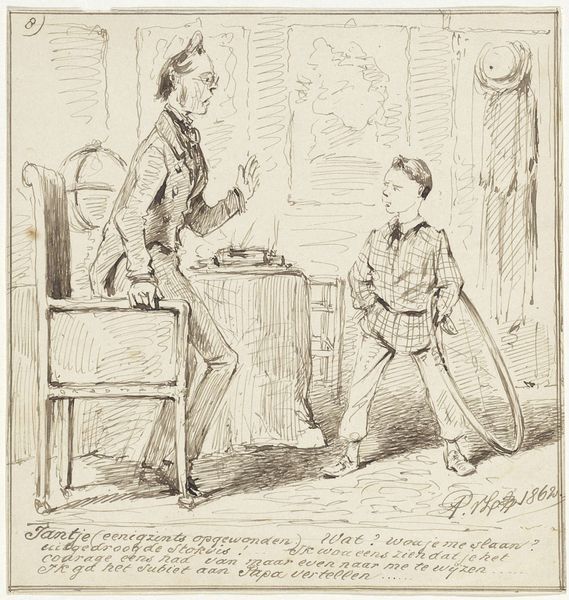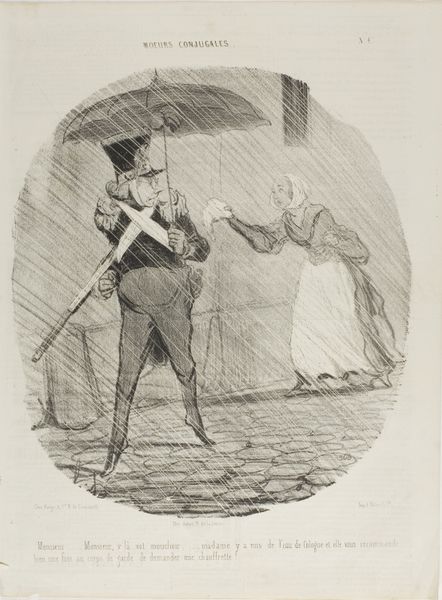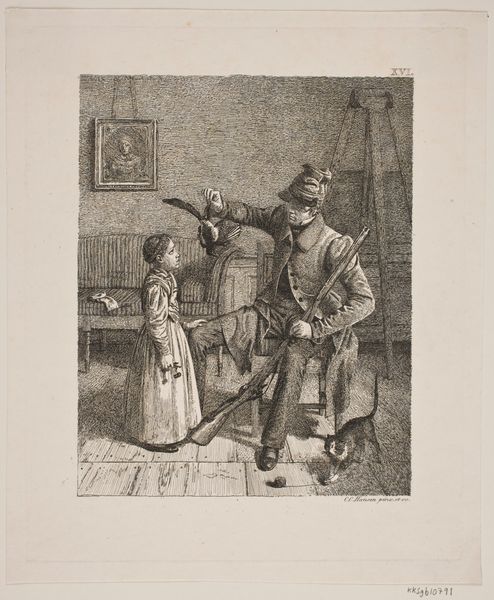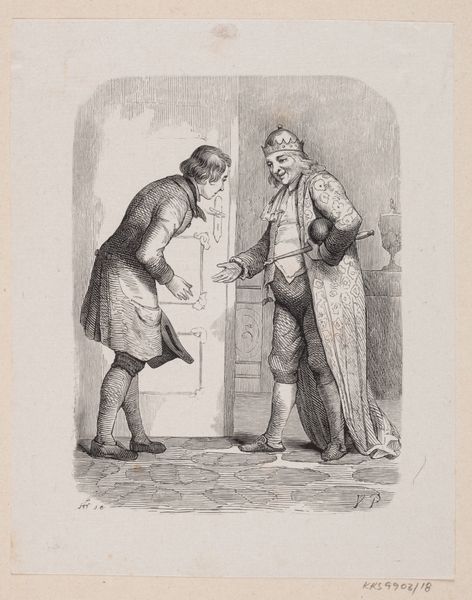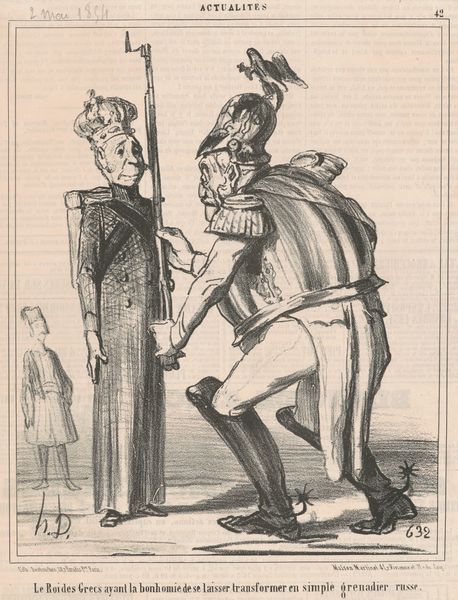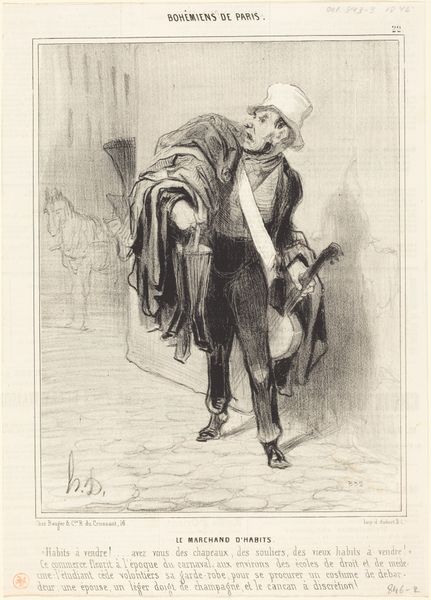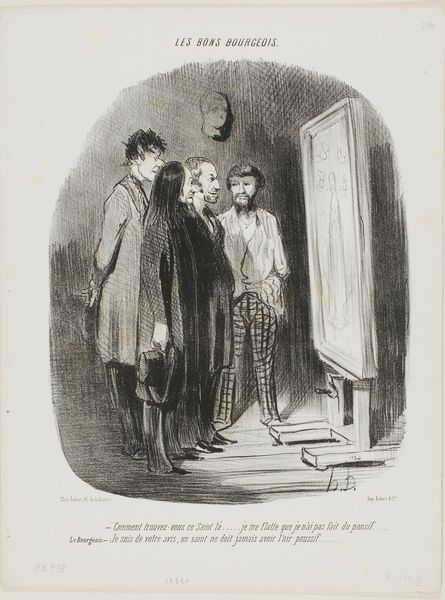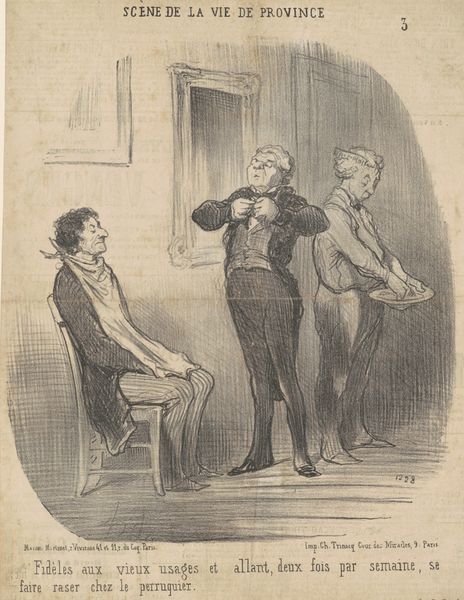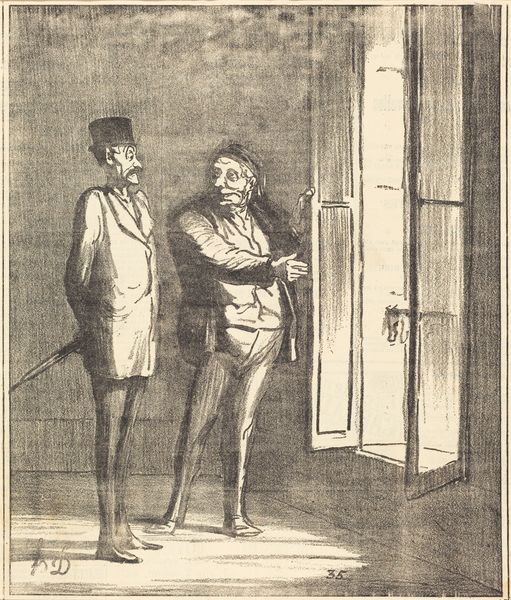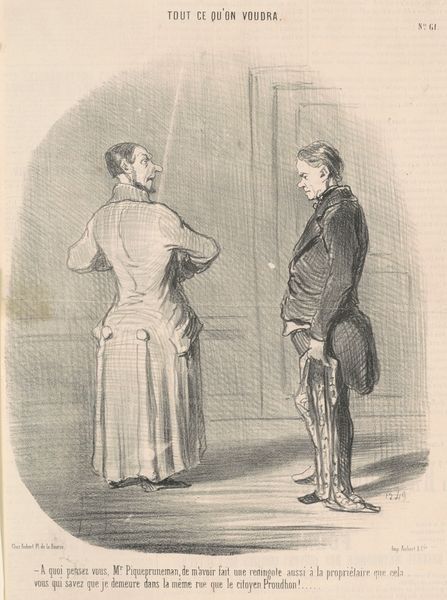
“- Three months ago, the Count sat model like that.... nowadays there is no more similarity..... everything seems to be wrong,” plate 40 from Tout Ce Qu'on Voudra 1848
0:00
0:00
drawing, lithograph, print, paper
#
drawing
#
lithograph
# print
#
caricature
#
paper
#
romanticism
#
france
#
sketchbook drawing
#
genre-painting
#
realism
Dimensions: 265 × 215 mm (image); 348 × 263 mm (sheet)
Copyright: Public Domain
Curator: This lithograph, “- Three months ago, the Count sat model like that.... nowadays there is no more similarity..... everything seems to be wrong," created by Honoré Daumier in 1848, now resides here at the Art Institute of Chicago. Editor: My initial response is a sort of detached amusement. There's a dynamic between the sharp linearity of the sketch and the rather deflated expressions of the subjects. The almost aggressive hatching creates a compelling depth and a somewhat melancholy mood. Curator: Daumier was, of course, a master of social critique. Looking at the political climate of France in 1848, just before the revolution, this work speaks volumes about the decline of the aristocracy and the changing social order. The title itself suggests a world turned upside down. Editor: Yes, consider the figure's posture – it's quite contrived, self-conscious. But is that portrait in the background, only somewhat more 'stately' than the other two, perhaps the best evidence of decay? In terms of form, the exaggerated features and distorted proportions contribute greatly to the overall satirical effect, wouldn't you agree? The almost grotesque depiction hints at a deeper commentary on vanity and corruption. Curator: Absolutely. And note how Daumier uses the print medium to disseminate his criticism widely. This was not an artwork for the elite salon; it was meant for the masses. Its power resided in its accessibility and its ability to capture a popular sentiment. Daumier knew his audience and exploited the lithograph's communicative potential. Editor: I wonder how contemporaries interpreted the relationship between the figures, compositionally speaking. The angle and position of the foreground man holding a kind of large primitive baton…how it leads us directly to the supposed Count on display and how both figures compare. I am intrigued by Daumier’s placement, positioning, and orientation of shapes in the visual field. Curator: Well, it gives us something to consider, that’s for sure. The social realities underpinning works such as this really shed light on a fascinating chapter of French history. Editor: Indeed. Analyzing the formal elements has certainly illuminated the possible tensions that otherwise may have gone unnoticed.
Comments
No comments
Be the first to comment and join the conversation on the ultimate creative platform.
